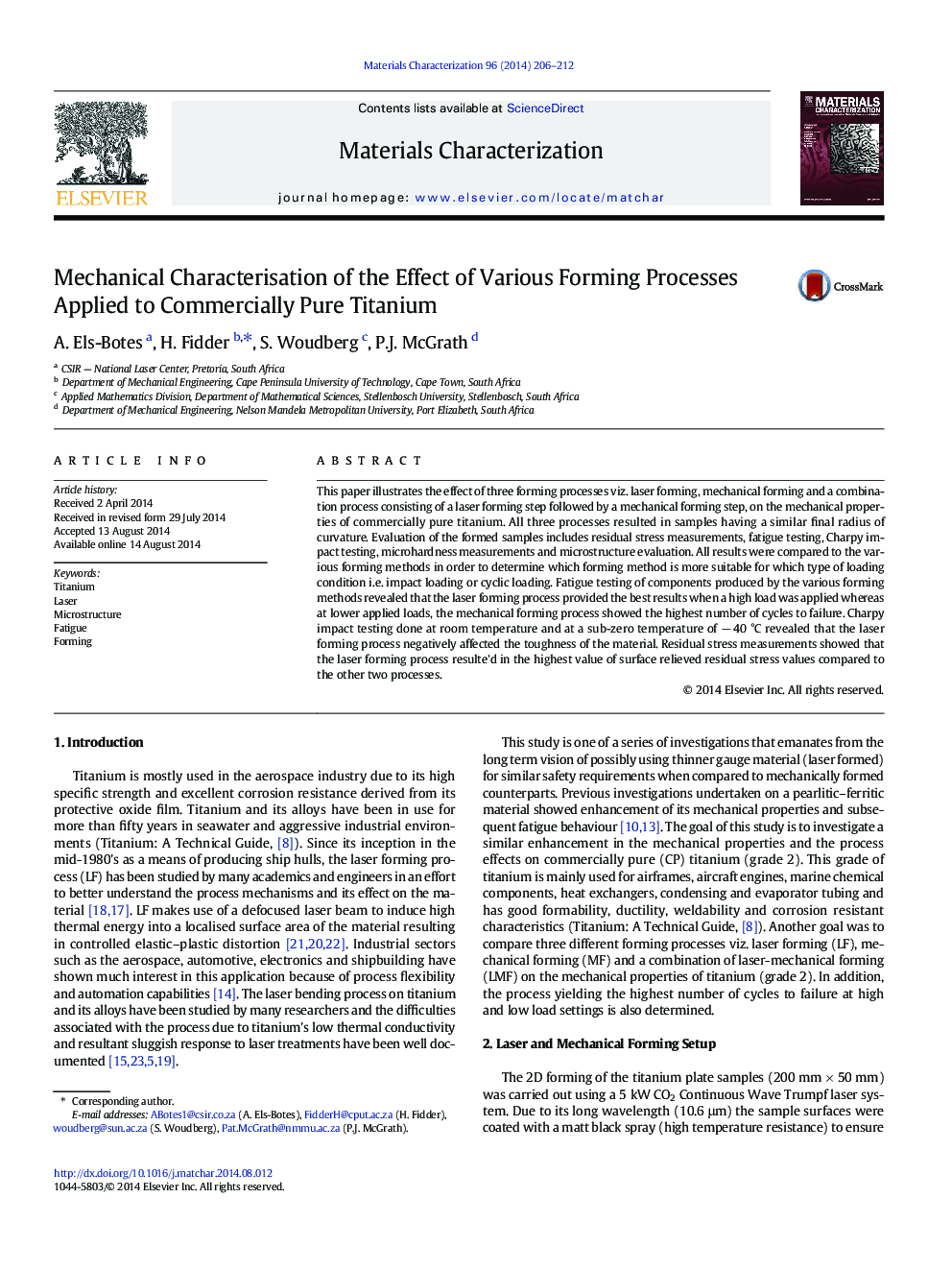| Article ID | Journal | Published Year | Pages | File Type |
|---|---|---|---|---|
| 1571061 | Materials Characterization | 2014 | 7 Pages |
Abstract
This paper illustrates the effect of three forming processes viz. laser forming, mechanical forming and a combination process consisting of a laser forming step followed by a mechanical forming step, on the mechanical properties of commercially pure titanium. All three processes resulted in samples having a similar final radius of curvature. Evaluation of the formed samples includes residual stress measurements, fatigue testing, Charpy impact testing, microhardness measurements and microstructure evaluation. All results were compared to the various forming methods in order to determine which forming method is more suitable for which type of loading condition i.e. impact loading or cyclic loading. Fatigue testing of components produced by the various forming methods revealed that the laser forming process provided the best results when a high load was applied whereas at lower applied loads, the mechanical forming process showed the highest number of cycles to failure. Charpy impact testing done at room temperature and at a sub-zero temperature of â 40 °C revealed that the laser forming process negatively affected the toughness of the material. Residual stress measurements showed that the laser forming process resulte'd in the highest value of surface relieved residual stress values compared to the other two processes.
Related Topics
Physical Sciences and Engineering
Materials Science
Materials Science (General)
Authors
A. Els-Botes, H. Fidder, S. Woudberg, P.J. McGrath,
